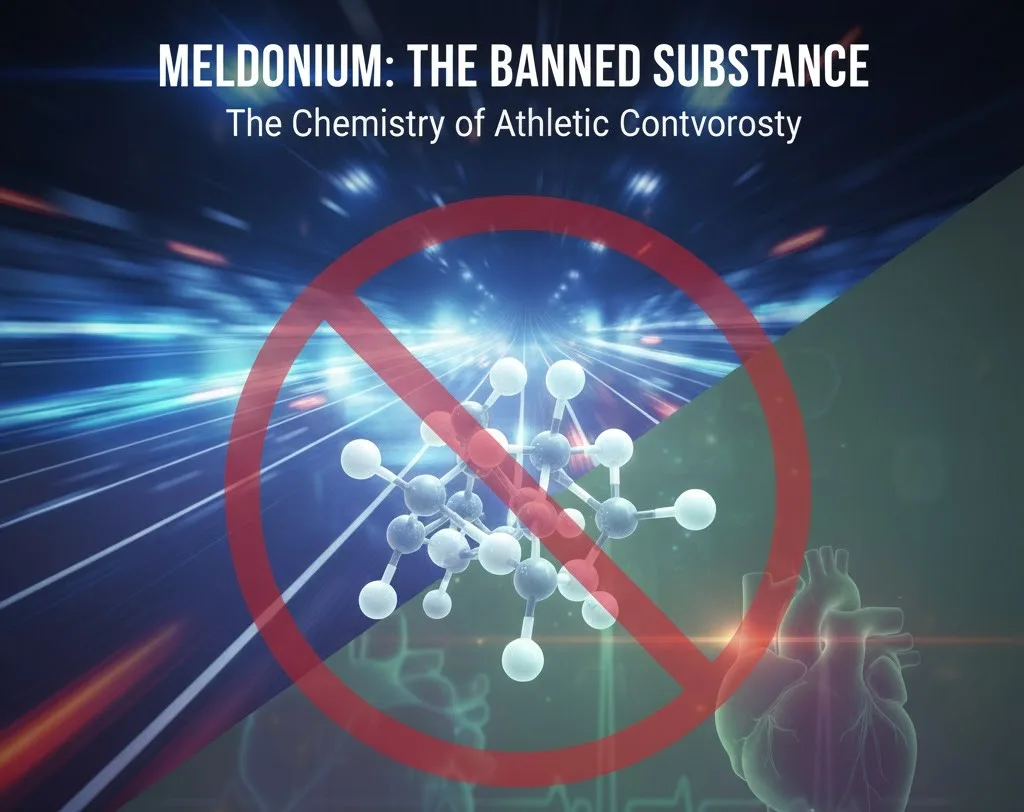Meldonium, also known by the brand name Mildronate, is a pharmaceutical compound that unexpectedly became a fixture in global sports headlines. While its primary medical use is treating heart conditions—such as angina, myocardial infarction, and heart failure—due to its function as a fatty acid oxidation inhibitor, its performance-enhancing potential led to its outright ban in athletic competition.
The Science Behind the Ban
Meldonium works by altering the body's metabolic pathways. Specifically, it inhibits the enzyme gamma-butyrobetaine hydroxylase, which reduces the synthesis of carnitine. Carnitine is a nutrient essential for transporting long-chain fatty acids into the mitochondria, where they are broken down for energy.
By limiting carnitine, the body is forced to switch its energy source from fatty acid oxidation to glucose (carbohydrate) metabolism. This shift is particularly beneficial under conditions of physical stress or low oxygen (ischemia), as glucose metabolism requires less oxygen to produce the same amount of ATP (cellular energy).
How It Relates to Athletes
For elite athletes, the metabolic switch induced by Meldonium offers several perceived benefits:
-
Enhanced Endurance: By making energy production more efficient under stress, athletes may experience increased stamina and resistance to fatigue, particularly in high-intensity and endurance sports.
-
Improved Recovery: The drug is believed to help protect cells from damage caused by strenuous exercise and accelerate the recovery process following intense training sessions.
-
Protection Against Ischemia: In sports demanding peak performance, the ability to improve oxygen supply to tissues, especially cardiac muscle, can be a significant advantage.
The combination of these effects led to its widespread, albeit unofficial, use in certain sports communities, particularly in Eastern Europe, long before it was classified as a prohibited substance.
The Decision to Prohibit
In September 2015, the World Anti-Doping Agency (WADA) announced its decision to add Meldonium to its Prohibited List, effective January 1, 2016. WADA's determination was based on evidence showing:
-
Its potential for performance enhancement.
-
Its use by athletes was for reasons other than clinical need.
-
The structure of the molecule (chemically: C6,H14,N2,O2) was similar to other banned substances.
The inclusion of Meldonium under the category of Hormone and Metabolic Modulators sent shockwaves through the sporting world, leading to a number of high-profile suspensions, most notably that of tennis star Maria Sharapova, who tested positive for the drug shortly after the ban took effect.
The controversy surrounding Meldonium highlights the continuous cat-and-mouse game between anti-doping authorities and those seeking a competitive edge, emphasizing WADA's commitment to ensuring a level playing field across all global sports.

